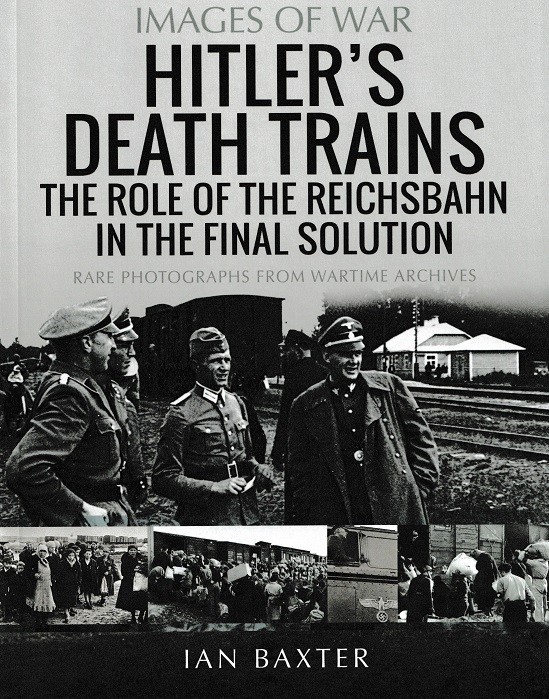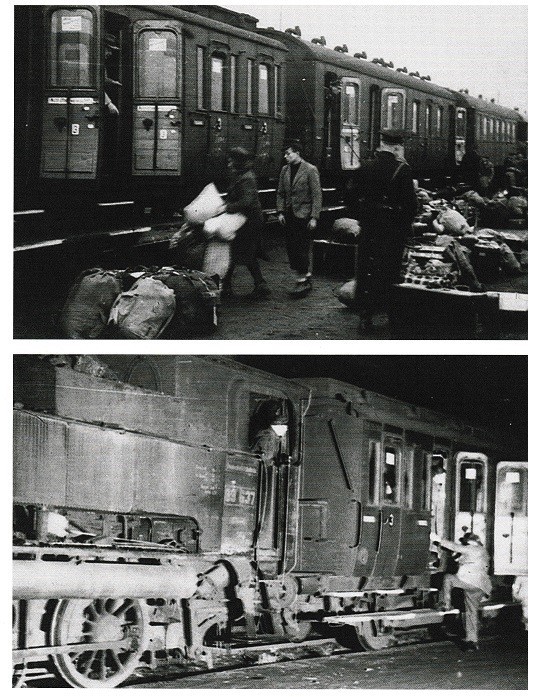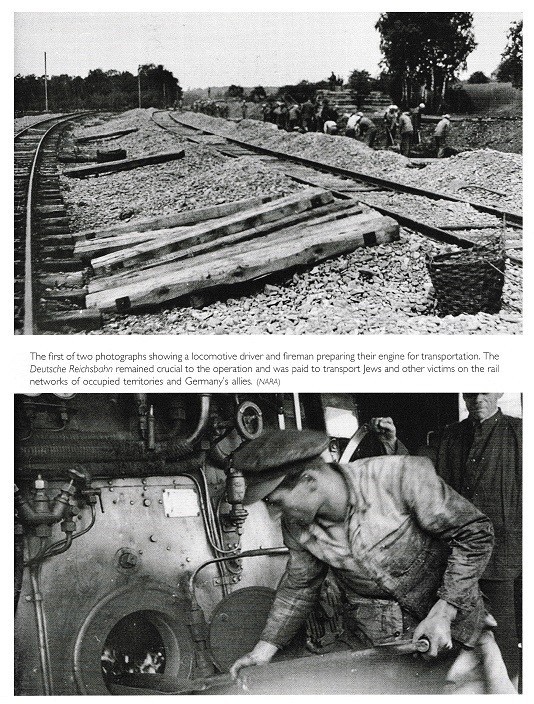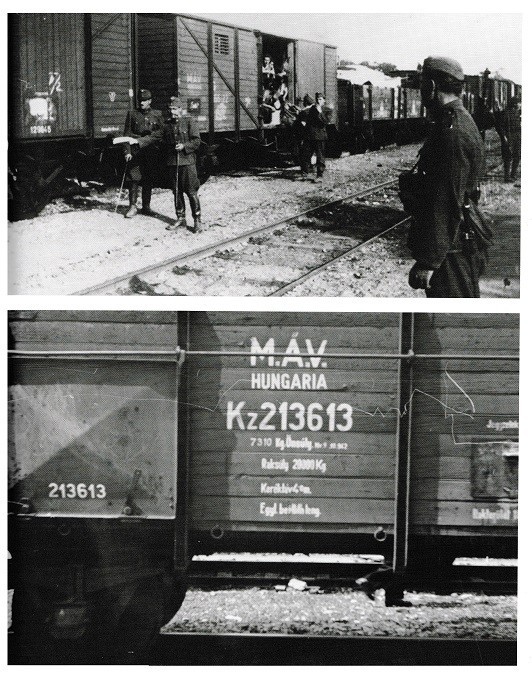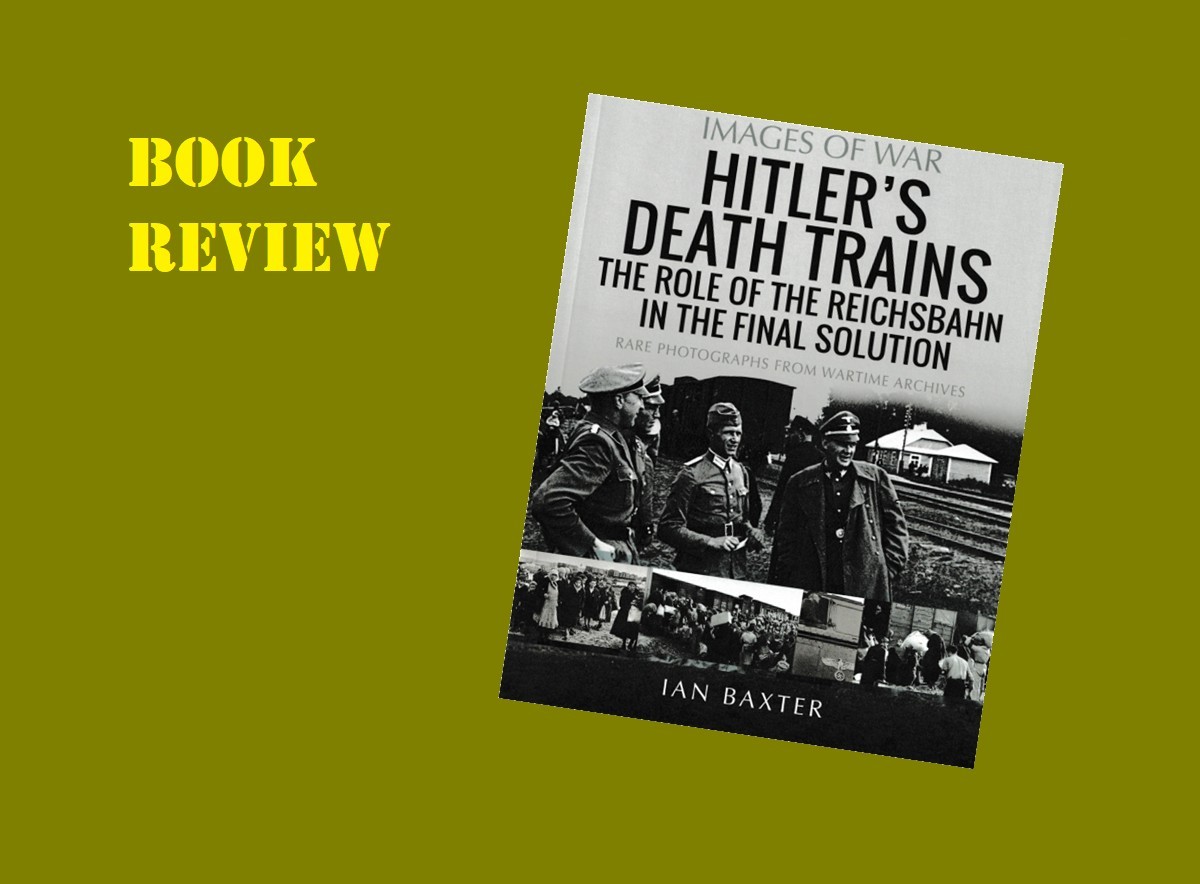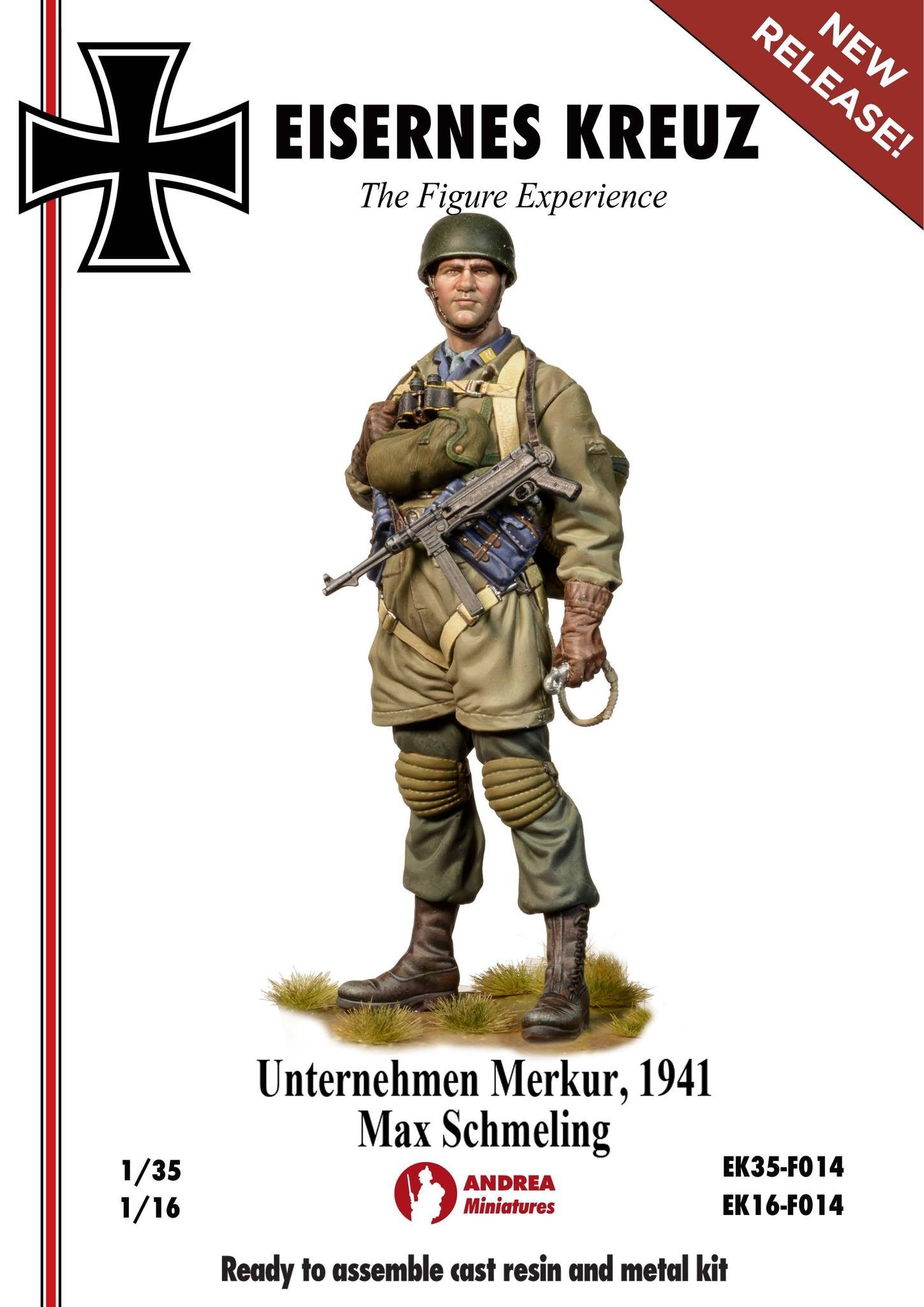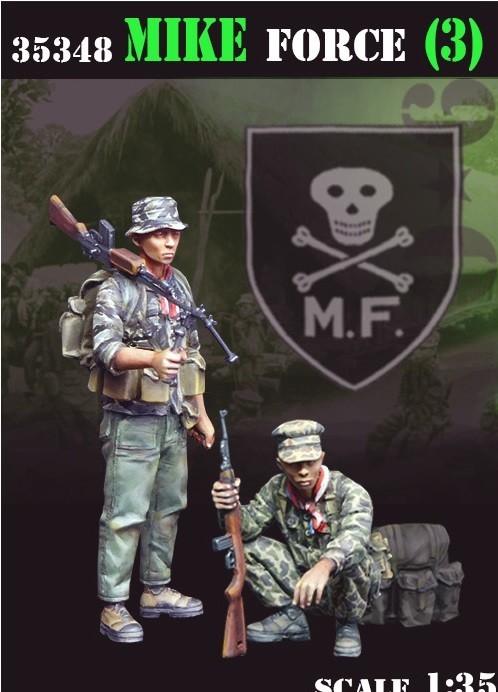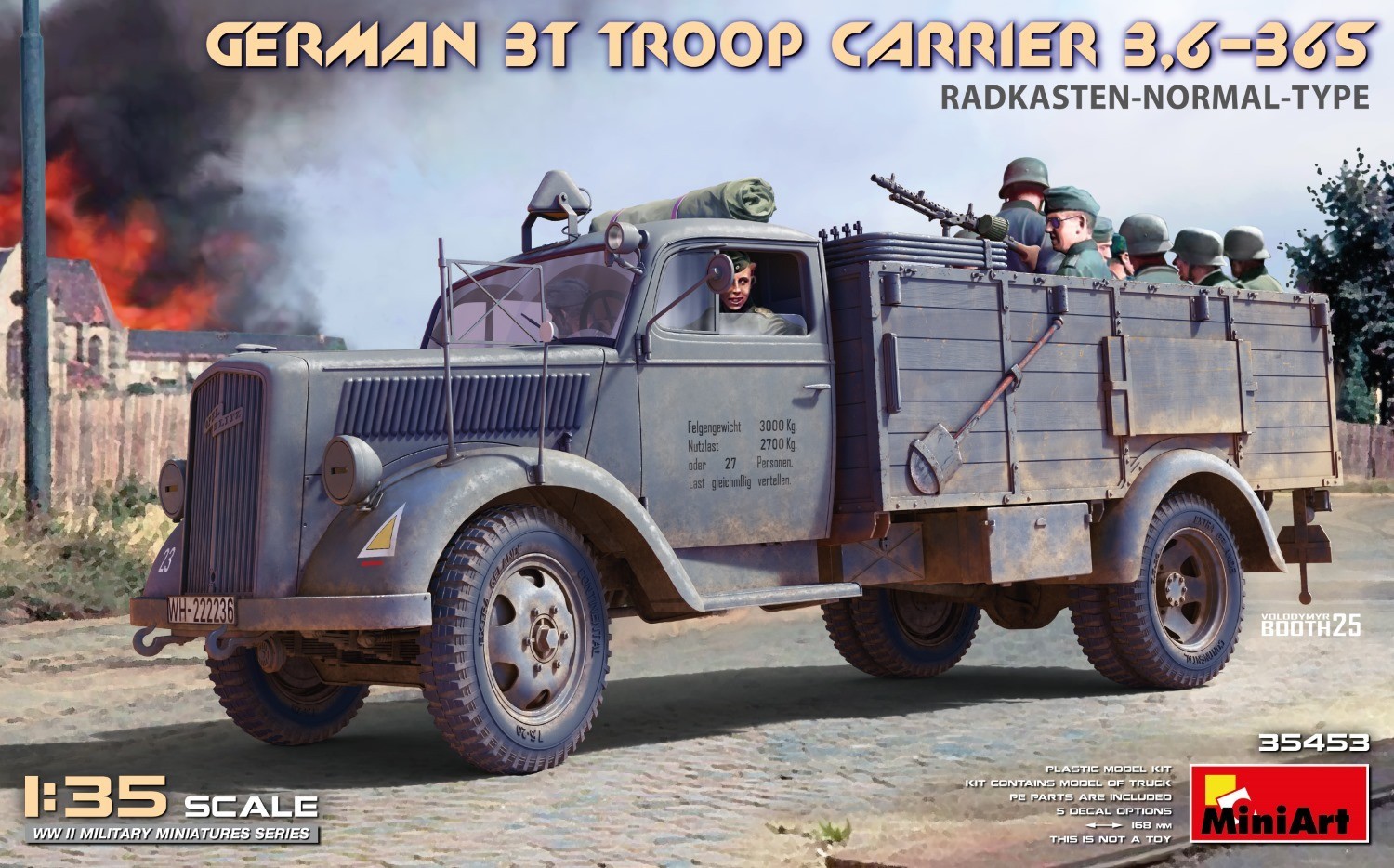HISTORY:
** Literature highlighting the horrors of the Holocaust has concentrated on the incarceration of Jews and others deemed hostile to Hitler’s Reich in ghettoes and their fate in the death camps. Little coverage has been given to the role played by the Deutche Reichsbahn (German National Railway). In fact, the success of the ‘Final Solution’ was dependent on the efficient utilization of the vast train network of Germany and the Nazi occupied territories. Without this it would have been impossible for Hitler’s henchmen to transport their victims in sufficient number to the extermination camps such as Auschwitz. While conditions on the trains were invariably inhuman, many Jews were forced to fund their own deportations through deposits paid to the SS towards ‘The resettlement to work in the East’ programme. Although these ‘death trains’ competed for valuable track space with Nazi war effort requirement, the importance of the extermination programme perversely prevailed. The conclusion of this well researched and highly illustrated book is that without the Reichsbahn, the industrial murder of millions of Jews, Roma and other ‘undesirables’ would not have been possible on the scale that was so tragically achieved. **
** Quoted from the back cover of the book.
THE BOOK:
Pen & Sword Books has released Casemate - Hitler's Death Trains - The Role of the Reichsbahn in the Final Solution as part of their Images of War series of books. It is a 128-page softcover book, 7.4 x 9.7 inches in size. Included with the text are black and white photographs. The book has a 2023 copyright, a publication date of August 8, 2023, and the ISBN is 978-1-3990-4008-2.
CONTENTS:
Introduction
Chapter One
- Plans for Genocide
Chapter Two
- Special Trains (Sonderzüge)
Chapter Three
- Destination: The Reinhard Camps (1942)
Chapter Four
- Transports across Europe
Chapter Five
- Western Deportations
Chapter Six
- Hungarian Transports
Aftermath
THE TEXT:
Author Ian Baxter provides a well written and informative text detailing the Deutche Reichsbahn (German National Railway) and its role in Hitler’s Final Solution during World War II. There are a total of 24 pages of text. The remainder of the book is dedicated to the photographs and the captions associated with them as well as 7 blank pages titled “Notes” for the reader to make notes if so desired. Even with the limited number of pages of text, Ian Baxter goes into great detail with a no-nonsense type of writing that provides a wealth of information on topics such as the number of railcars per train, the process taken by trains transporting the internees and the rules put in place and how communication was accomplished all to keep the cargo of the trains and their destinations secret. Other information provided covers subjects such as numbers of people transported, the number of people expected to be placed in each boxcar, numbers of deaths, numbers of survivors, points of collection and shipping and destinations. Also discussed are the actions required by the internees upon arrival while being processed, the actions taken by camp guards and how the guards were instructed to act in front of the new arrivals to help ensure that there was no initial panic. In addition to his own words, Ian Baxter has also provided quotes from internees discussing their observations, the loudspeaker announcement that was given to new arrivals at Sobibor, and a notice posted at Treblinka titled “Attention Warsaw Jews” which provided instructions regarding what to do about their hygiene and what to do with their clothing and valuables. I feel that Ian Baxter has covered the role the Deutche Reichsbahn in Hitler’s final solution well and has provided the information in an easy-to-read format which the detailed oriented reader will benefit from. Ian Baxter doesn’t use what I would refer to as fluff writing where a large amount of non-essential extra text is provided just to help fill the pages. As I read through the text, I didn’t notice any spelling or grammatical errors. Grammar and spelling might not be an important factor to everyone however it is something that I take notice of and pass on my findings. Anyone wanting to add an excellent history book detailing the Deutche Reichsbahn and its role in Hitler’s final solution program during World War II to their personal library will be pleased with this informative and interesting book.
THE PHOTOGRAPHS:
A total of 142 black and white photographs are included in this volume. There are no color photographs featured. Author Ian Baxter chose subject specific photographs and did not include photographs that strayed from the main subject of the book. The majority of the photographs are period photos with the remainder, a total of 11, being recent photographs that were taken by the author’s niece in February of 2022. Most of the period photographs are clear and easily viewable; however, a few of them are somewhat blurry and a few of them appear to be too dark, while others appear to be too light. This can be typical for the discussed period of history and the quality of the photographs is of no fault of the author and they do not take anything away from the book. In addition to the photographs of various train engines and railcars and members of the Reichsbahn there is a wealth of photographs featuring subjects such as railcar markings, rail yards, rail way buildings and ramps, embarkation and debarkation locations, hand operated track laying equipment period clothing and uniforms, several pictures of the internees being marched to and from the railcars as well as being loaded and unloaded from the railcars, stacks of the internes luggage and possessions, an aerial view of Auschwitz, and as one can assume, due to the subject of the book, there are numerous photographs of deceased internees shown during their time under Nazi control and also after allied liberation. The majority, if not all, of the photographs will prove to be of great interest to anyone interested in the Deutche Reichsbahn (German National Railway) during World War II due to the details they contain.
THE CAPTIONS:
The captions are well written and explain the accompanying photographs nicely. The captions go into very specific detail as to the actions taking place, dates and locations, individual’s names, and other such pertinent information. As I read through the captions, I didn’t notice any spelling or grammatical errors. I was impressed by Ian Baxter’s captions as they are very helpful to the reader due to their detailed content as opposed to other captions that I have seen that are very brief and lacking in detail.
Pen & Sword Books’, Hitler's Death Trains - The Role of the Reichsbahn in the Final Solution, is also available digitally from:
Amazon
Apple
Barnes & Noble
Kobo
PRICE
UK £14.99 / US $26.95
https://www.casematepublishers.com/
This book, from Pen & Sword Books, was provided to me by Casemate Publishers. Please mention that you saw the book reviewed here on the KitMaker Network when you make your purchase. Thank you.
